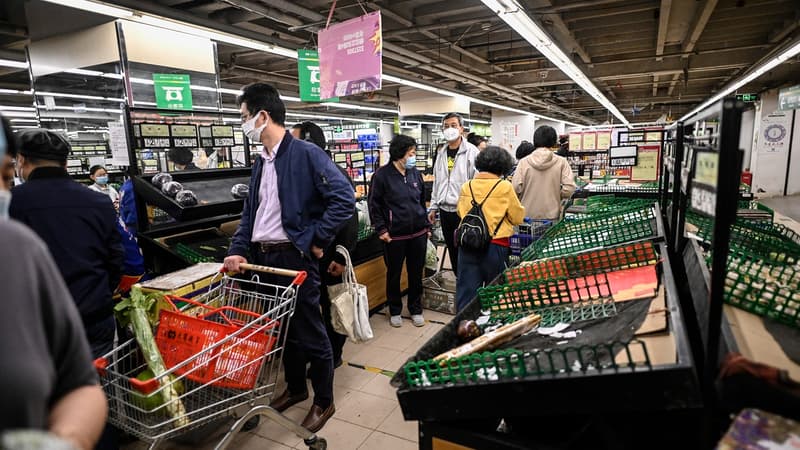One by one, Chinese economic signals turn orange, even red. Growth below forecasts, record youth unemployment, consumption at half mast, decline in exports… For several months now, the world’s second largest economy has been plagued by bad news, in a context of deteriorating international economic conditions .
The latest sign that attests to the stranglehold of the post-Covid recovery in China: the announcement this Wednesday of its entry into deflation, with a fall in consumer prices estimated at 0.3% per year in July, according to the National Statistics Office (SNB). ). The first in more than two years.
Anticipated by analysts, this fall in prices makes China a special case, at a time when the major economies continue to struggle against inflation. But it is by no means reassuring. Because while deflation may seem like a good thing on paper, a general fall in prices that lasts over time would be bad for the economy.
The deflationary spiral trap
At first glance, deflation seems desirable for consumers as falling prices strengthen their purchasing power. But this phenomenon, if it is to last, could quickly become a threat to the economy.
The mechanics are well known: households anticipating further price reductions postpone their purchases to take advantage of even more attractive prices. Companies then see demand collapse and reduce their production and investments accordingly. They also agree to new discounts to liquidate their stocks, once again encouraging consumers to delay their purchases and save… The deflationary spiral is set in motion.
This self-perpetuating process reduces company turnover and ultimately translates into lower wages, layoffs, increased unemployment, and loss of household purchasing power.
Borrowers, victims of deflation
Deflation penalizes borrowers, be they individuals, businesses, or the state. Because when prices fall, the real weight of the debt increases: the money paid back is worth more than the money borrowed. This forces them to restrict their consumption and investment. In the opposite logic, deflation is beneficial to lenders, since the amount to be repaid will provide them with more purchasing power than the initial amount lent.
China rules out spiral risk
At this stage, China wants to be reassuring. The SNB rules out any lasting deflationary phenomenon, assuring that the drop in the price index is only temporary. Not to mention that core inflation, which does not take price volatility into account, rose 0.8% in July.
China experienced a brief period of deflation in late 2020-early 2021, due to the collapse in the price of pork, the most widely consumed meat in the country. But many analysts fear a longer stretch this time, when China’s main growth engines are at a standstill and youth unemployment is at a record high of more than 20%.
In this context, some experts call on China to launch a vigorous stimulus plan to stimulate demand. But the authorities are sticking for the moment to specific measures and declarations of intent with respect to the private sector. However, the onset of deflation could prompt the government to reconsider its approach. Meanwhile, China has ordered its economists not to publish too alarmist news on this subject, according to the Financial Times.
Source: BFM TV


